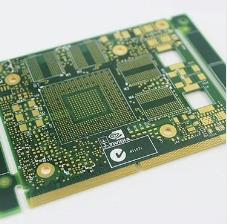With the continuous increase in the yield ratio of flexible PCBs and the application and promotion of rigid-flex PCBs, it is now more common to add softness, rigidity or rigid-flexibility when talking about PCBs, and say that it is a few-layer FPC. Generally, FPC made of soft insulating substrate is called soft FPC or flexible FPC, and rigid-flex composite PCB is called rigid-flex PCB. It meets the needs of today's electronic products in the direction of high density and high reliability, miniaturization, and light weight. It also meets the strict economic requirements and the needs of market and technology competition.
In foreign countries, flexible PCB has been widely used in the early 1960s. In China, production and application only began in the mid-1960s. In recent years, with the promotion of global economic integration and the opening of the market, the use of imported technologies has continued to increase. Some small and medium-sized rigid FPC factories aim at this opportunity to adopt soft and hard craftsmanship, and use existing equipment to improve tooling and tooling. The process has been improved to transform the production of flexible PCBs and adapt to the ever-increasing demand of flexible PCBs. In order to further understand the PCB, here is an exploratory introduction to the soft PCB process.

Flexible PCB classification and its advantages and disadvantages
1. Flexible PCB classification
Flexible PCBs are usually classified as follows according to the number and structure of conductors:
1.1 Single-sided flexible PCB
Single-sided flexible PCB, with only one layer of conductor, and the surface can be covered or not covered. The insulating base material used varies with the application of the product. Commonly used insulating materials include polyester, polyimide, polytetrafluoroethylene, and soft epoxy-glass cloth.
Single-sided flexible PCB can be further divided into the following four categories:
1) Single side connection without covering layer
The conductor pattern of this kind of flexible PCB is on the insulating substrate, and the conductor surface has no covering layer. Like the usual single-sided rigid FPC. This type of product is the cheapest one, usually used in non-critical and environmentally friendly applications. The interconnection is realized by soldering, welding or pressure welding. It is commonly used in early telephones.
2) One-sided connection with cover layer
Compared with the previous type, this type only has an extra layer of covering on the surface of the wire according to customer requirements. The pads need to be exposed when covering, and it can simply be left uncovered in the end area. If precision is required, the form of clearance hole can be adopted. It is the most widely used and widely used single-sided flexible PCB, and is widely used in automotive instruments and electronic instruments.
3) Double-sided connection without covering layer
This kind of connection board interface can be connected on the front and back of the wire. In order to achieve this, a via hole is opened on the insulating substrate at the pad. This via hole can be punched, etched or made by other mechanical methods at the required position of the insulating substrate. It is used to mount components and devices on both sides and where soldering is required. There is no insulating substrate in the pad area of the via. Such pad area is usually removed by chemical methods.
4) With cover layer connected on both sides
The difference between this type and the previous type is that there is a covering layer on the surface. However, the cover layer has via holes, which allows termination on both sides and still maintain the cover layer. This kind of flexible PCB is made of two layers of insulating materials and a layer of metal conductors. It is used in the occasions where the covering layer and the surrounding devices need to be insulated from each other, and the ends need to be connected to both the front and back sides.
1.2 Double-sided flexible PCB
Double-sided flexible PCB with two layers of conductors. The application and advantages of this type of double-sided flexible PCB are the same as those of a single-sided flexible PCB, and its main advantage is to increase the wiring density per unit area. It can be divided into with or without metallized holes and with or without covering layer: a without metallized holes, without covering layer; b without metallized holes, with covering layer; c with metallized holes, without covering layer ; D There are metallized holes and covering layers. The double-sided flexible PCB without covering layer is rarely used.
1.3 Multilayer flexible PCB
Flexible multi-layer PCB, like rigid multi-layer PCB, adopts multi-layer lamination technology to make multi-layer FPC flexible circuit board. The simplest multilayer flexible PCB is a three-layer flexible PCB formed by covering two copper shielding layers on both sides of a single-sided PCB. This three-layer flexible PCB is equivalent to a coaxial wire or a shielded wire in electrical characteristics. The most commonly used multilayer flexible PCB structure is a four-layer structure, which uses metallized holes to realize interlayer interconnection. The middle two layers are generally the power layer and the ground layer.
The advantage of multilayer flexible PCB is that the base film is light in weight and has excellent electrical properties, such as low dielectric constant. The multi-layer flexible PCB board made of polyimide film as the base material is about 1/3 lighter than the rigid epoxy glass cloth multi-layer PCB board, but it loses the excellent single-sided and double-sided flexible PCB. Most of these products do not require flexibility.